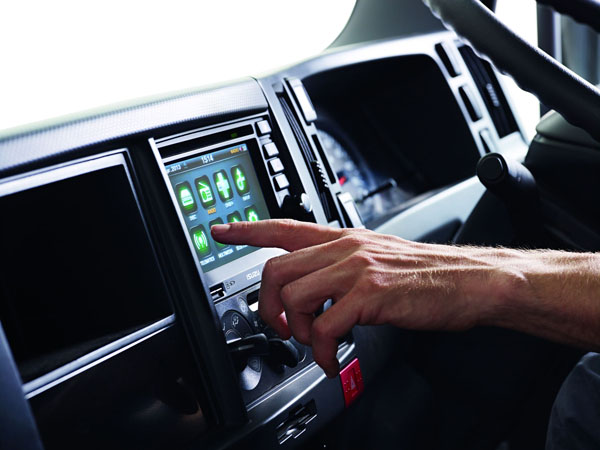
Connectivity, whether it’s between driver and vehicle, or occupants and the outside world, is the new automotive buzzword, with recent research by carmaker Nissan showing almost a third of new-car buyers put connectivity ahead of other features, including fuel economy.
It says 28 per cent of new-car buyers put Bluetooth ahead of other features, 13 per cent would not buy a car that could not connect to the internet, and 20 per cent would switch to another brand for better connectivity.
Now, Australia’s truck sales leader has taken connectivity to a new level with its Isuzu Telematics system that provides a platform for transport operators seeking more input into the safety of their fleets and drivers. There are savings to be made by checking fuel economy too.
The system is run by a black box fitted behind a truck’s dashboard works through a server and wireless devices to provide operational and driver safety, such as live positioning, trip playback, optimum routes, plus fleet and engine information.
Developed in Australia, the system is specifically designed for Isuzu trucks being operated in local conditions. Connected to the Telstra mobile network, using Google maps, it covers metro and rural areas.
Offered on two levels – Isuzu Connect and Isuzu Connect Plus – with the new F Series range of medium-duty truck range, the former, which can be retrofitted to older models, provides around-the-clock reporting on driver speed, over-revving, heavy braking and adherence to designated routes.
Isuzu Connect Plus, working with the DAVE (Digital Audio Visual Equipment) touchscreen offers more specific information such as extra engine performance monitoring and vehicle diagnostics, alerting owners to potential mechanical issues before they pose risks to safety.
Additional safety features include a panic button, collision alert and door-open warning. New features – driver ID and two-way messaging – will be added later this year.
Phil Taylor, director and chief operating officer of Isuzu Australia Ltd, believes telematics are not used enough as a safety tool. “Our research shows telematics are still being used primarily for vehicle tracking and, as market leaders, we need to be getting the message out that this technology has enormous capacity to impact on road safety in Australia,” Mr Taylor says.
“In the next decade, we are going to see that telematics will be the single most important technological development in our vehicles and on our roads,” he adds. From a buyers’ point of view, latest research appears to agree.